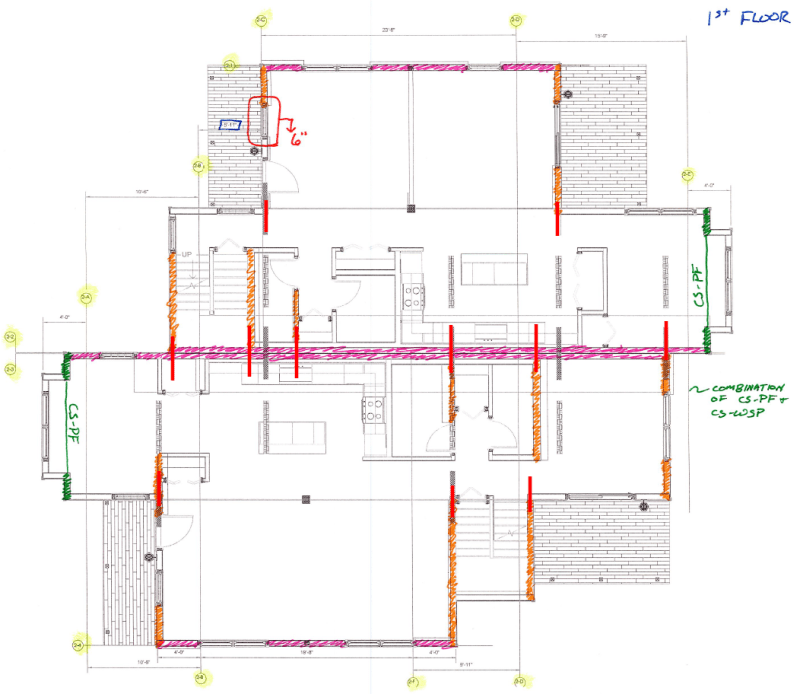P1ENG - I'll admit that this is the one thing I typically diverge from my rule 1, above, on. I hate braced wall calcs with a passion. Diaphragm and shear walls are soooo much easier. Also, the most common need for actual engineering on a house in my area is because braced walls don't work - lot's of big houses looking out at the ocean or bay with nothing but glass on the back wall.
That said, I've looked into braced walls plenty and have a decent understanding of them. There largely empirical, but if you stare at them long enough you can see the engineering logic slowly bleed through. My experience with is limited to fully sheathed WSP houses - I don't believe in designing a house that somebody can break into with a box cutter.
You do have hold downs in these. Because you're essentially taking the full length of the wall (less windows and other lengths that are too short), it's a lot like a perforated shear wall. When you get to the end of the wall, you have certain conditions that must be met. A minimum length of sheathed wall, for instance. If you don't have that, you need a minimum length around the corner. I see this as engaging that dead load around the corner to act as a sort of hold down by way of the mysterious 'alternate load paths' that tend to exist in these houses. If you can't get that, then you have to use a hold hold and it really is just a perforated shear wall at that point.
I'd say don't waste your time on braced wall spreadsheets. There's a code official in Fairfax County here in VA that produced a
nice easy one, though it is based on the 2018 IRC. And both
Simpson and
APA have online tools (APA's is the best). I'm not encouraging you to just trust the black box, but probably better to vet theirs than to try to make your own.

![[spin2] [spin2] [spin2]](/data/assets/smilies/spin2.gif)
